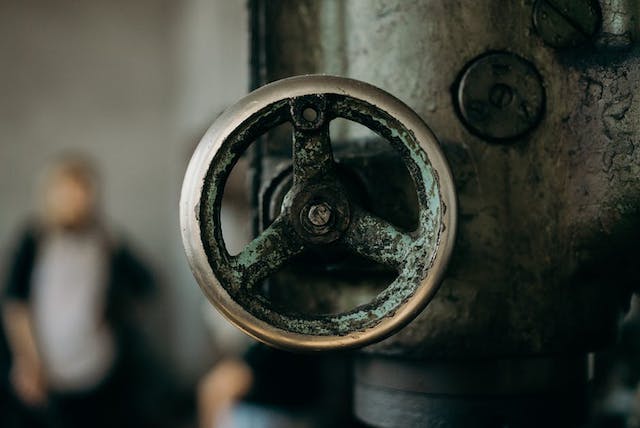Types Of Valves in Oil and Gas Industry
04-03-23

As of 2023, the oil and gas market has reached a size of $7.33 trillion.
Oil and gas are used all over the world in residential, commercial, and industrial applications. A lot goes into keeping things running, and there are many different components that make up any one system. One crucial type of component is a valve, and they come in a range of designs for various applications.
For a rundown of the types of valves in the oil and gas industry, keep reading.
What Is a Gas Valve?
A gas valve is a device that’s placed in a gas system, and it can open and close to adjust the flow of gas or oil. Using the valve controls, someone can regulate pressure within a system to control how much liquid or gas can flow through it.
Depending on the type of valve, it may also be possible to change the direction of the flow of the substance. All systems are different, which means the valves needed will vary in terms of design, size, material, etc., depending on the project. The type of valve you choose will determine its ability to relieve pressure, form a tight seal, and more.
Types of Valves in the Oil and Gas Industry
There are various types of valves available. The best one for a project will depend on a range of factors, and they each have different advantages/disadvantages.
Gate Valves
Gate valves are among the most widely used type around. The operation and design are both fairly simple. It can be set to either fully open or fully closed, making it ideal for when a controlled flow rate is required. This means that it can allow slurry fluids to flow easily, but they’re not suitable when throttling is required.
Globe Valves
These are a common choice for open and close operations and they allow for great pressure control. Globe valves work well for both throttling and flow regulation.
An operator can use the actuator to easily raise and lower the plug, which sits vertically. Note that these valves can produce a drop in pressure due to their S-shaped passageway.
Check Valves
Some valves aren’t ideal for high-pressure applications as they may struggle to open. Check valves can be much better for this, making them very popular in oil and gas refineries.
They also help prevent the backflow of gases and liquids. This ensures there’s no cross-contamination of substances even when different materials are used in a single pipeline.
Unlike other valve types, check valves don’t need an actuator. One downside, however, is they’re often trickier to install, and they need to be placed very accurately to make sure there are no issues with the pressure of the fluids.
Plug Valves
The disc in a plug valve is plug shaped, as the name suggests. It sits in a horizontal passageway and allows fluid to flow through the hole when the valve is open.
The actuator can be turned 90 degrees to close it, which will stop the flow. Plug valves are best for systems that contain unrefined oil products, such as those in biogas production. These aren’t suitable for applications that require throttling.
Ball Valves
Ball valves are best for applications that require a full flow or complete closure. This is because they operate well in the open and closed position but aren’t good for regulation control or throttling.
One of the main advantages is that they allow for very fast shut-offs providing a fast, tight seal. They’re also easy to maintain and repair in comparison to other valves.
There are various styles of ball valves available, so if you need this type of valve you’ll have plenty of options. Some examples are the floating ball valve and the trunnion ball valve. The former is best for low-to-medium pressure applications, while the latter is more suitable when high pressures are involved.
Butterfly Valves
Butterfly valves are very lightweight and compact with a simple design. They have a rod in the center attached to a disc that can be fully opened and closed. When closed the seal is tight, and when opened material can flow through easily without a significant pressure drop.
These work well in systems that have large-diameter pipes. Gate valves are often not well-suited for such situations, so butterfly valves can be a great alternative.
Slam-Shut Valves
A slam-shut valve is often placed in a system just before a regulator. It will remain open but will immediately shut off if there’s a significant change in pressure. It will stay shut until it’s manually re-opened.
One of the main benefits of slam-shut valves is that they can protect other components in a system, whether it be upstream or downstream. They’re often called “safety and relief valves” because of this. On top of protecting the system itself, they can also help reduce the risk of accidents or injuries for anyone working nearby.
Finding the Right Valve for a Job
With so many types of valves in the oil and gas industry, it’s important to know which ones are the most suitable for varying applications. Look at your project and determine things like the pressure in the system, the size of the pipes, and the flow requirements. This will help you decide on the right type of valve for any job.
Everlasting Valve Company is a leading supplier of valves. We have a huge selection of valves to choose from, so you can get whatever you need for your project. You can click here to get a free quote from us today.